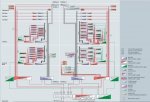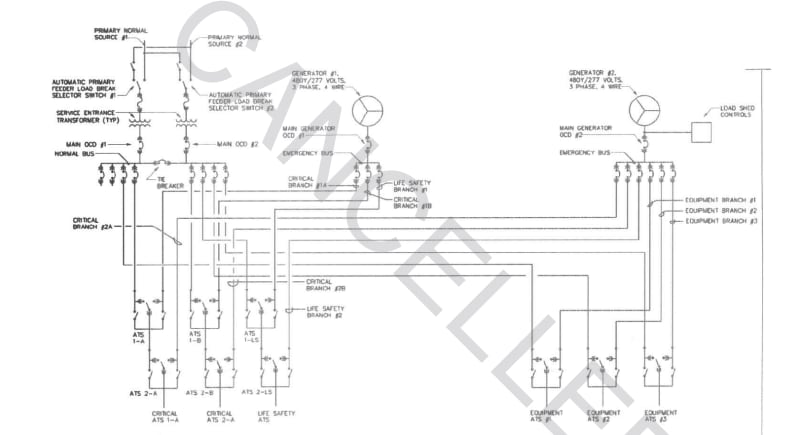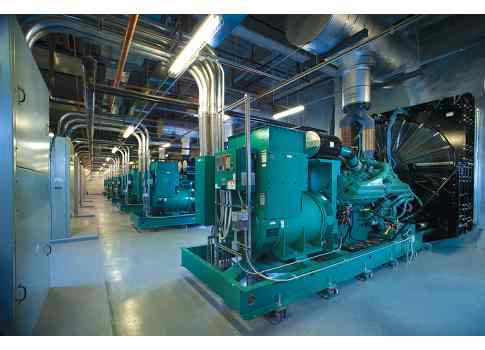Take a quick look at the following links. I am making the assumption that fused mains equates to "bolted pressure contact switch". In certain applications, say an industrial plant where planned outages are not a problem and you have a qualified staff, I think they are the right choice. Just not for a hospital with staff that isn't as knowledgeable and an administration bent on constant 24/7/365 operation.
For example, are you aware that at least one manufacturer of bolted pressure contact switches requires that if it ever opens a fault it may not be returned to service without maintenance? Pretty much all of them require annual maintenance. That is going to require a complete shutdown of all POCO feeders in your designs. Good luck on getting any hospital to obey that.
http://apps.geindustrial.com/publib...OARDS?TNR=White Papers|GEAR-OR-BOARDS|generic
https://www.munichre.com/site/hsb/g...News/In-The-News/2016/main-switch-failure.pdf
Thanks- I'll read up on that. I wish manufacturers took bolted pressure switches as seriously as they took breakers...
Circuit breakers offer much longer service intervals. You don't have guys hunting for the proper fuse and needing to know where a torque wrench is. I have seen folks harm these switches and themselves but not knowing how to charge springs. Some people get in a downright panic mode and just can't think clearly. Keep in mind these switches are good for thousands of no load operations but relativity few full load operations. If they have ground fault protection they will be subjected to more full load breaks than is desired. Staff might not be knowledgeable enough to understand the need to open all downstream devices before closing. I have seen them fail and it isn't pretty. They tend to be "custom built" so it takes a lot of time for factory engineers to come in and re-engineer a solution or rebuild them on-site. Throw in portable generators, interruption of service cost, etc, and you are going to be looking at nearly a million bucks+ per incident. I'll gladly take the draw out breaker that I can talk most any idiot thru changing out.
IMO:
Circuit breakers are more likely to fail. It is much harder to selectively coordinate them, especially when short circuit power and source positive, negative and zero sequence components change.
Properly coordinated fuses do not blow unless there is an actual fault between the blown fuse and the next down stream device. Replacing fuses or resting a tripped breaker both may not be a good idea until a cause is determined.
However, I do agree with you load break switches need to change and need to be designed more like breaker contacts. Perhaps draw out fuses should also be offered by manufacturers like in POCO environment.
Paralleling generator gear allows me the means to effectively double the capacity of my generators on loads that can be a delayed transfer, such as the equipment branch. I would never sign off on a single generator so the ability to parallel isn't that much of an extra cost.
At the expense of common mode failures. At the expense of inviting temptation to place all the gen sets in the same room, often without barrier between them. And at the expense of cost, where the same money could go into more gensets/ATS/hardening.
You might be able to avoid ground fault requirements under the "less than 150 volts to ground" loophole but I don't think this is in the best interest of anyone. Well maybe it is in the best interest of bean counters that think catastrophic faults never happen and people are expendable commodities.
Why can't a fuse or breaker do what a GF does? I've never understood code's justification fully and considering how science was "re-invented" to get AFCIs into the code I've seen enough to question it- to say the least.
I mean my God people. EE's design far more robust electrical system for data and telecommunications sites than they do hospitals. Medical errors are now the third leading cause of death and it isn't just heart attacks and bacteria. System failures are a part of this. Damn the cost and the minimal requirements of code. Do what is right and just don't even offer them less than what is right. If every EE did so the field would be even. Sadly, one of these days, almost every one of us will end up in a hospital and be dependent on its ability to keep us alive. Lets do our part to make sure they have what it needs in an electrical infrastructure to keep us alive.
Because honestly, code is partly to blame. (The rest is manufacturers up-selling expensive gear/solutions and hospital not willing to invest much beyond code minimum.)
In data centers the main branch is 3x replicated with each branch on its own ATS and own generator(s). Each server has 3 sources of independent power. Where as an OR or ICU has some 40 red receptacles on the same critical branch and a few vanilla receptacles in some obscure place like behind the bed, behind the boom or on the OR wall down low away from the operating table.
Now imagine the same approach to an OR: 3 normal independent branches with 100% selective coordination each feeding 1/3 of the 40 red receptacles. Perhaps each labelled as to what branch.












